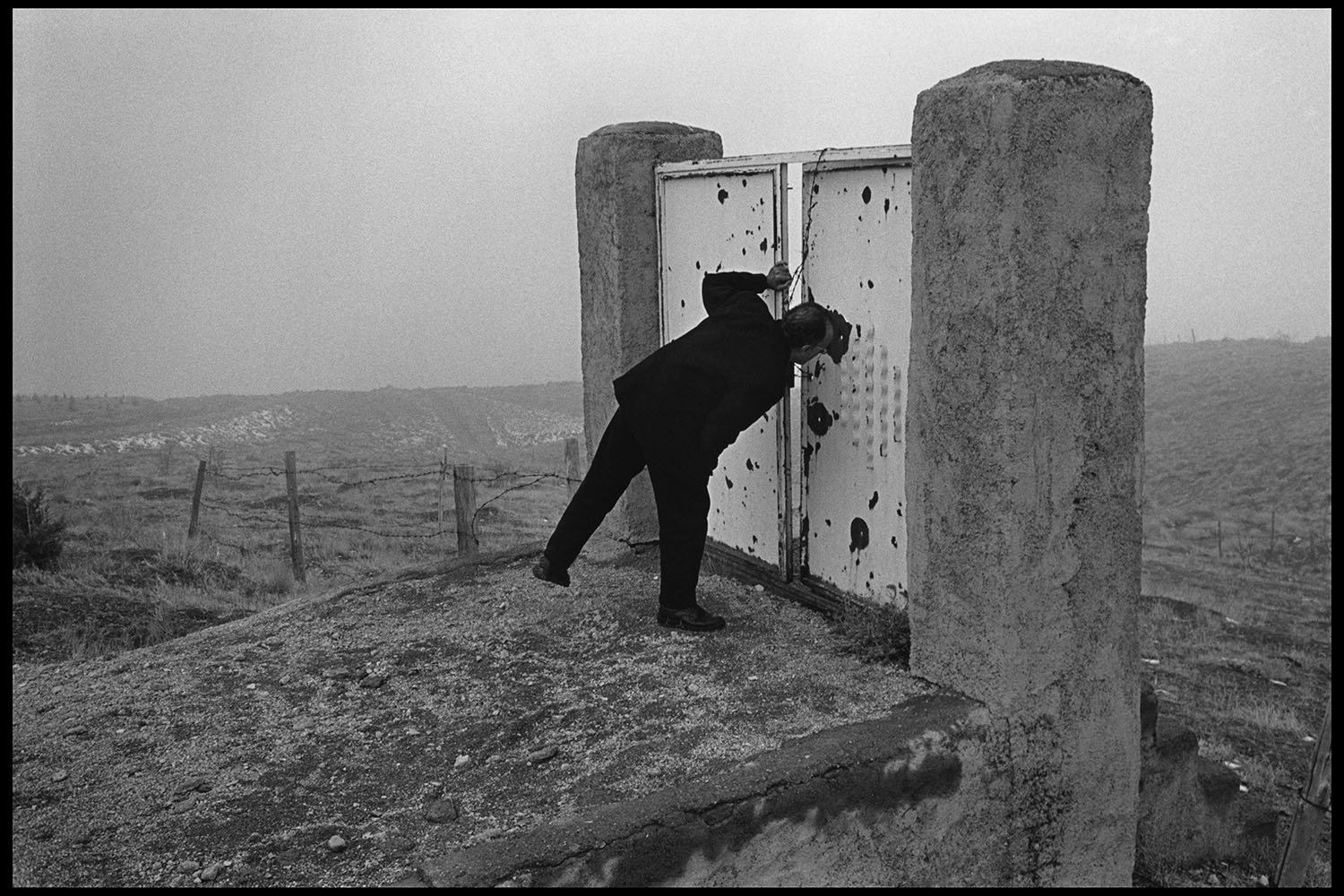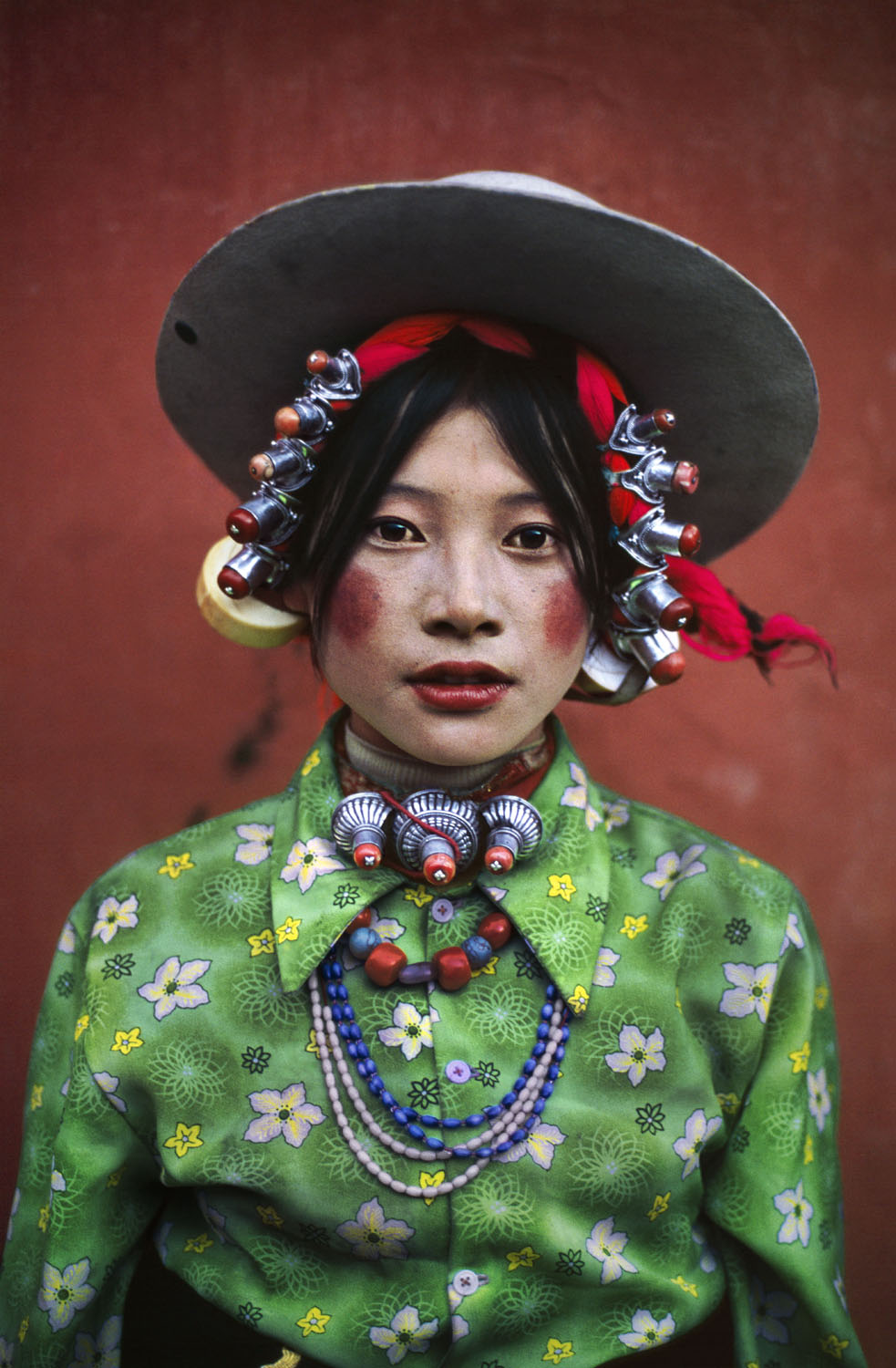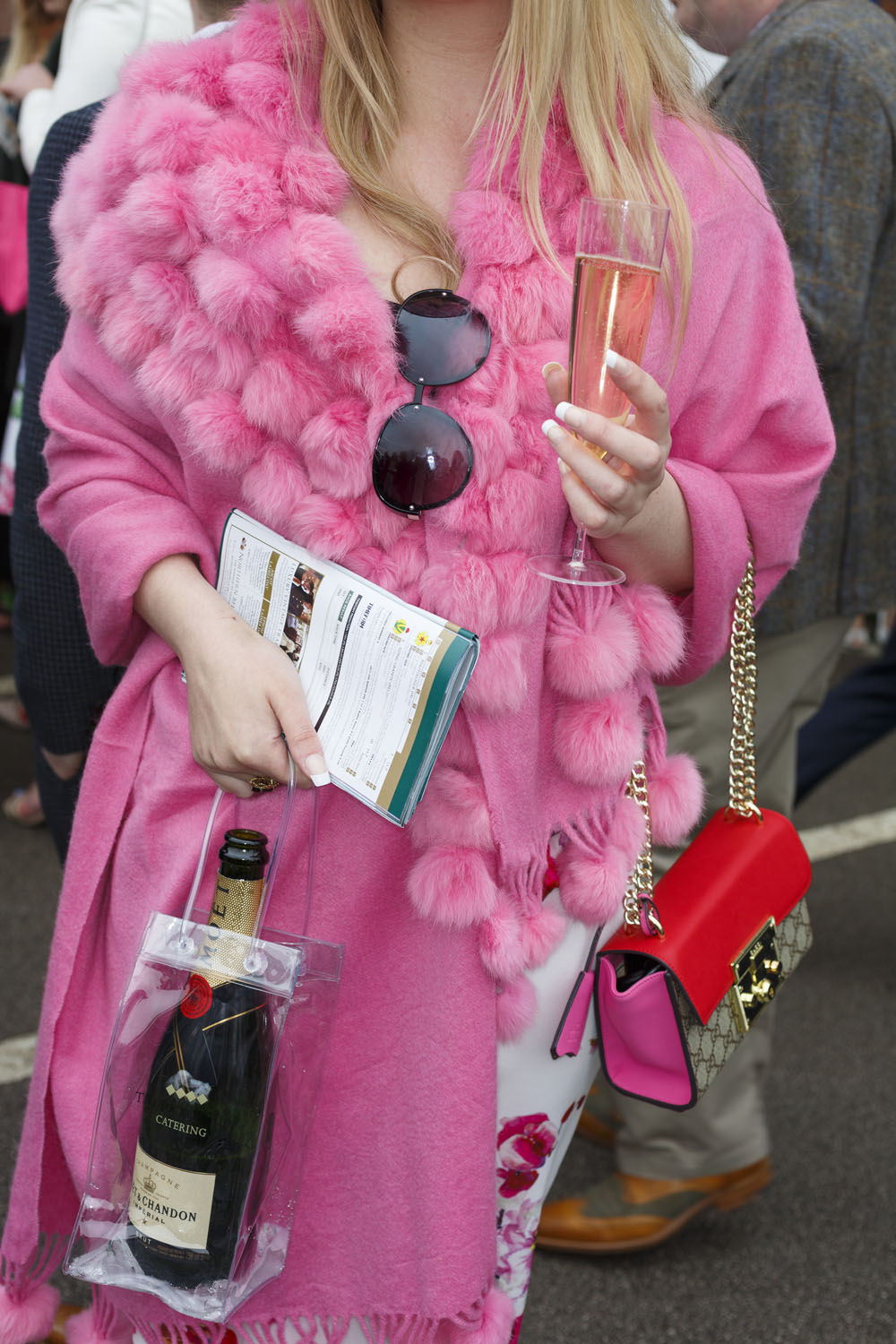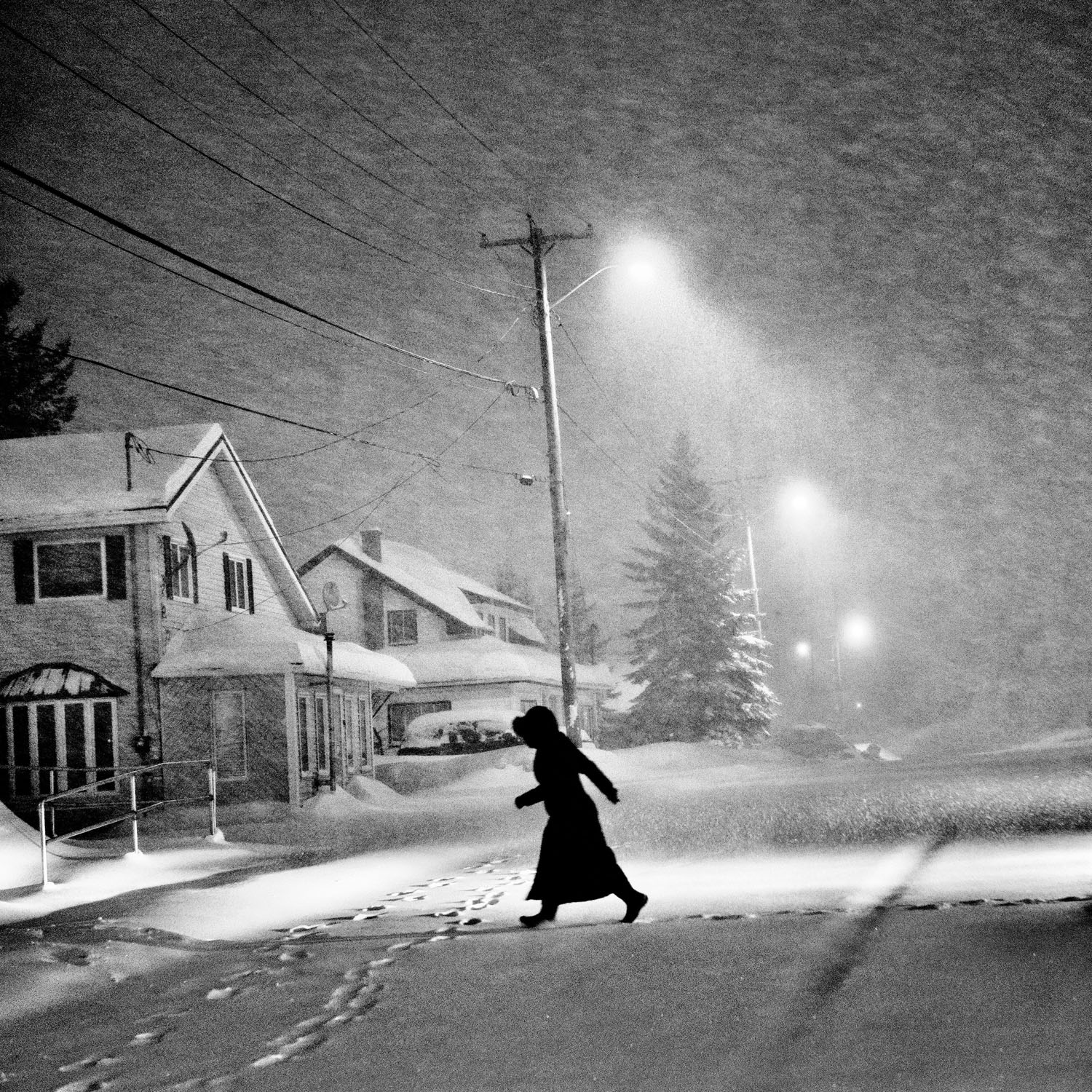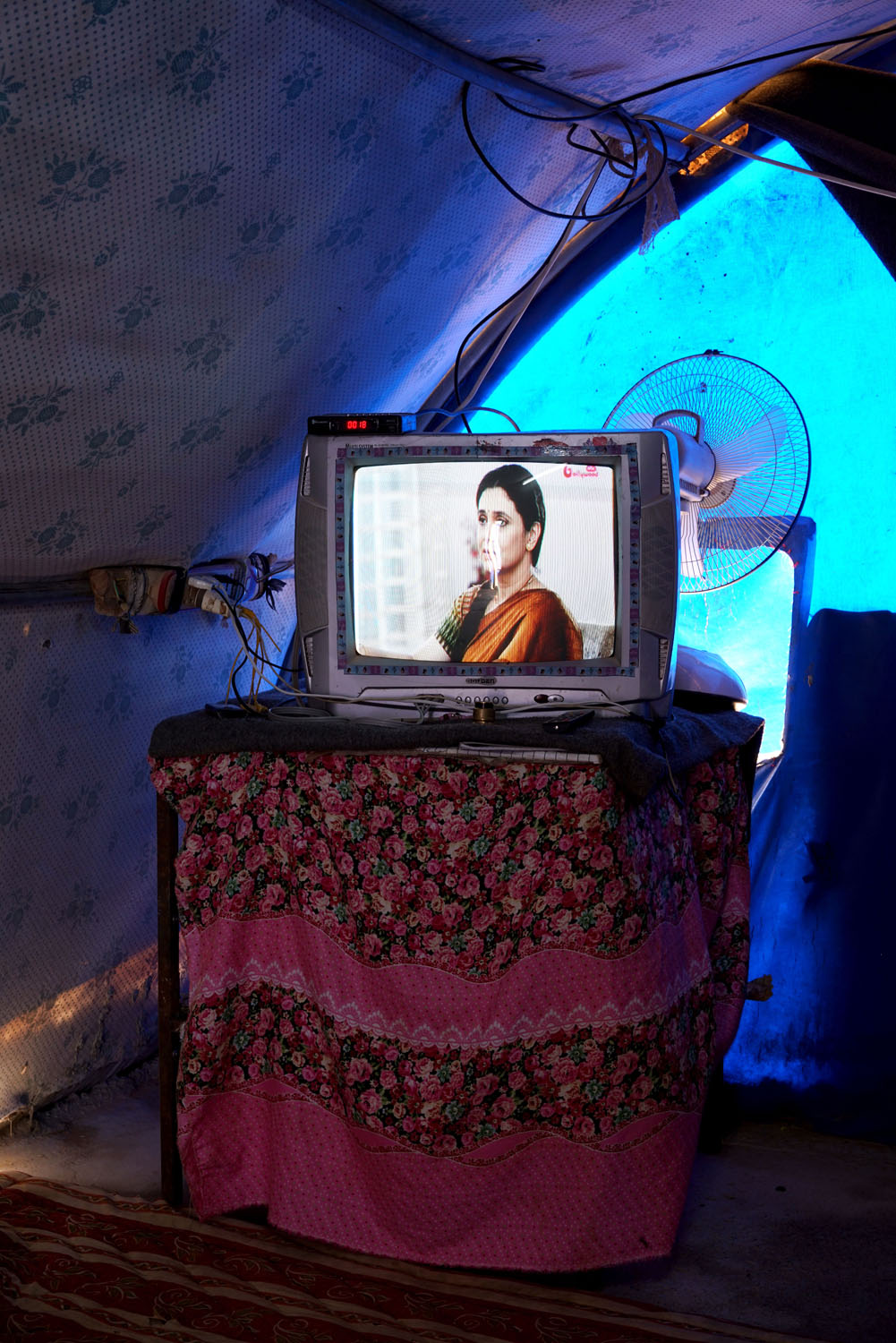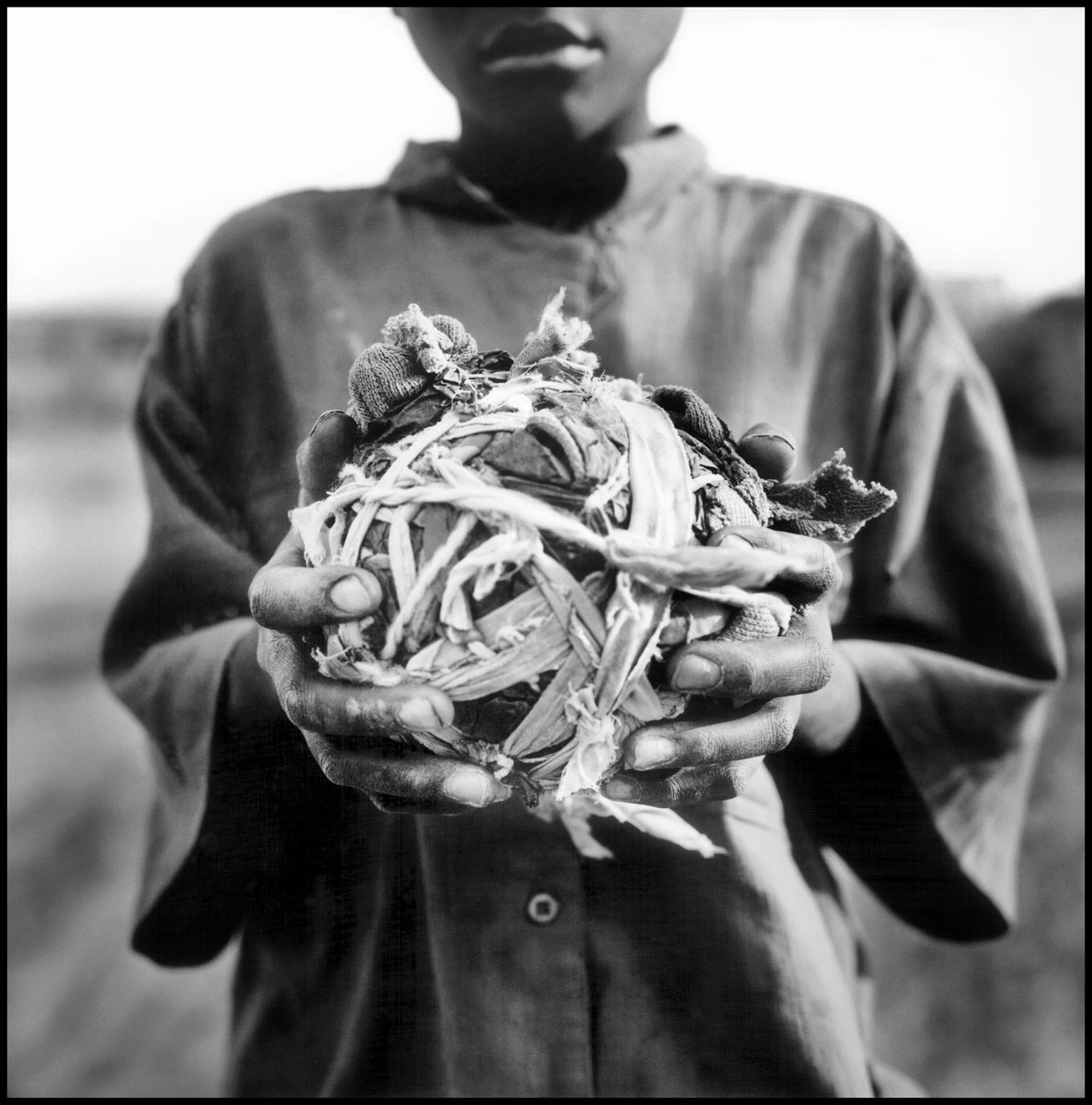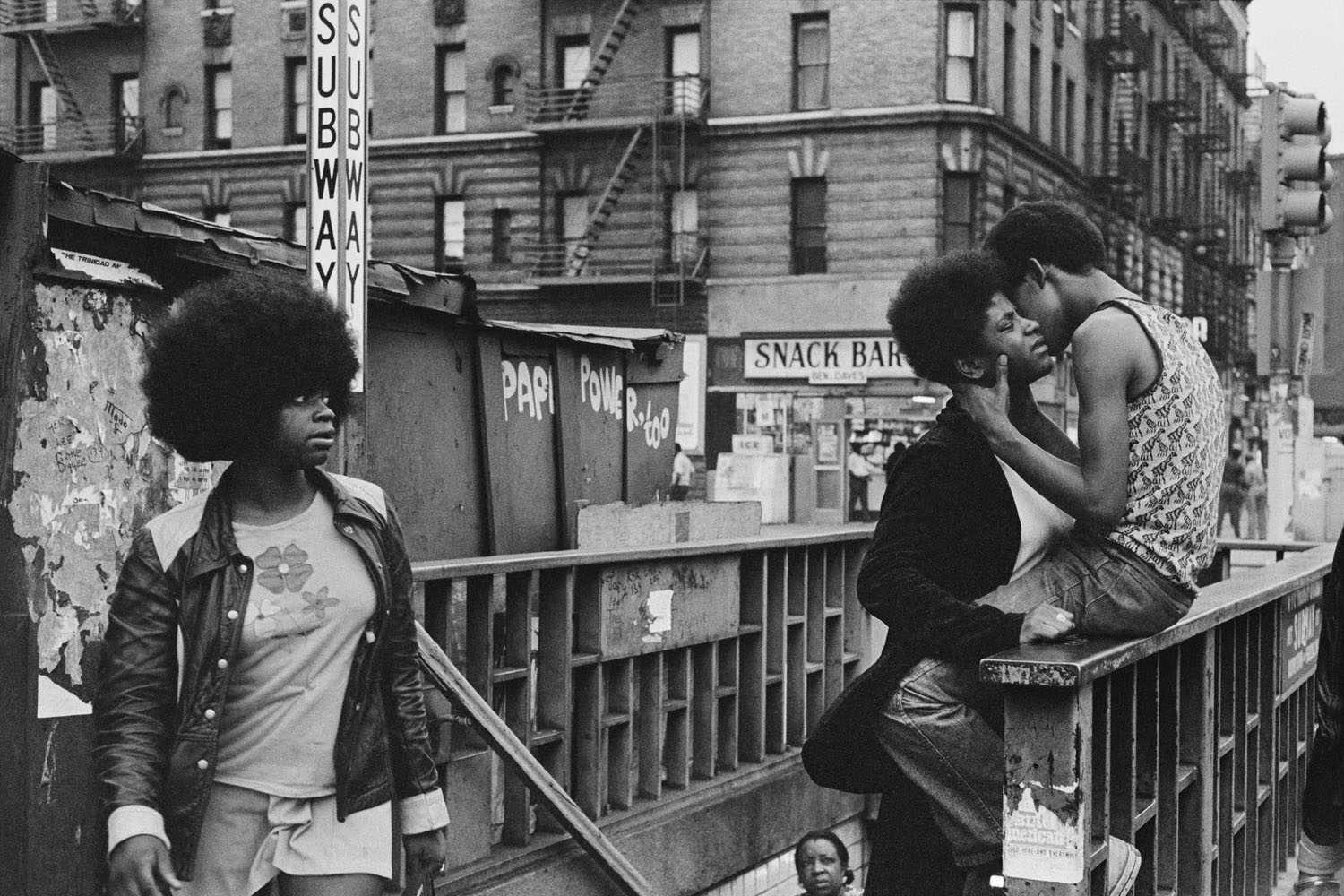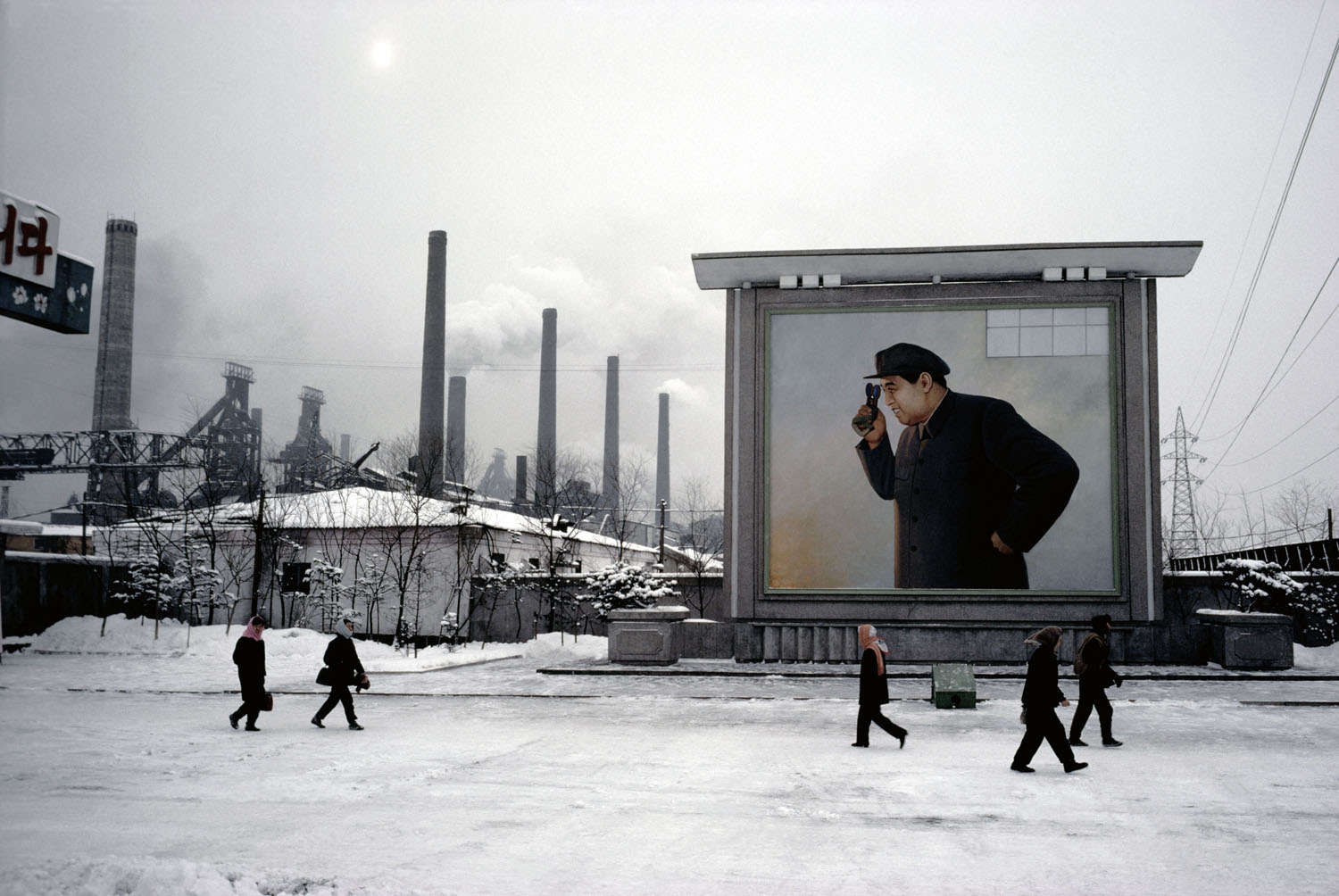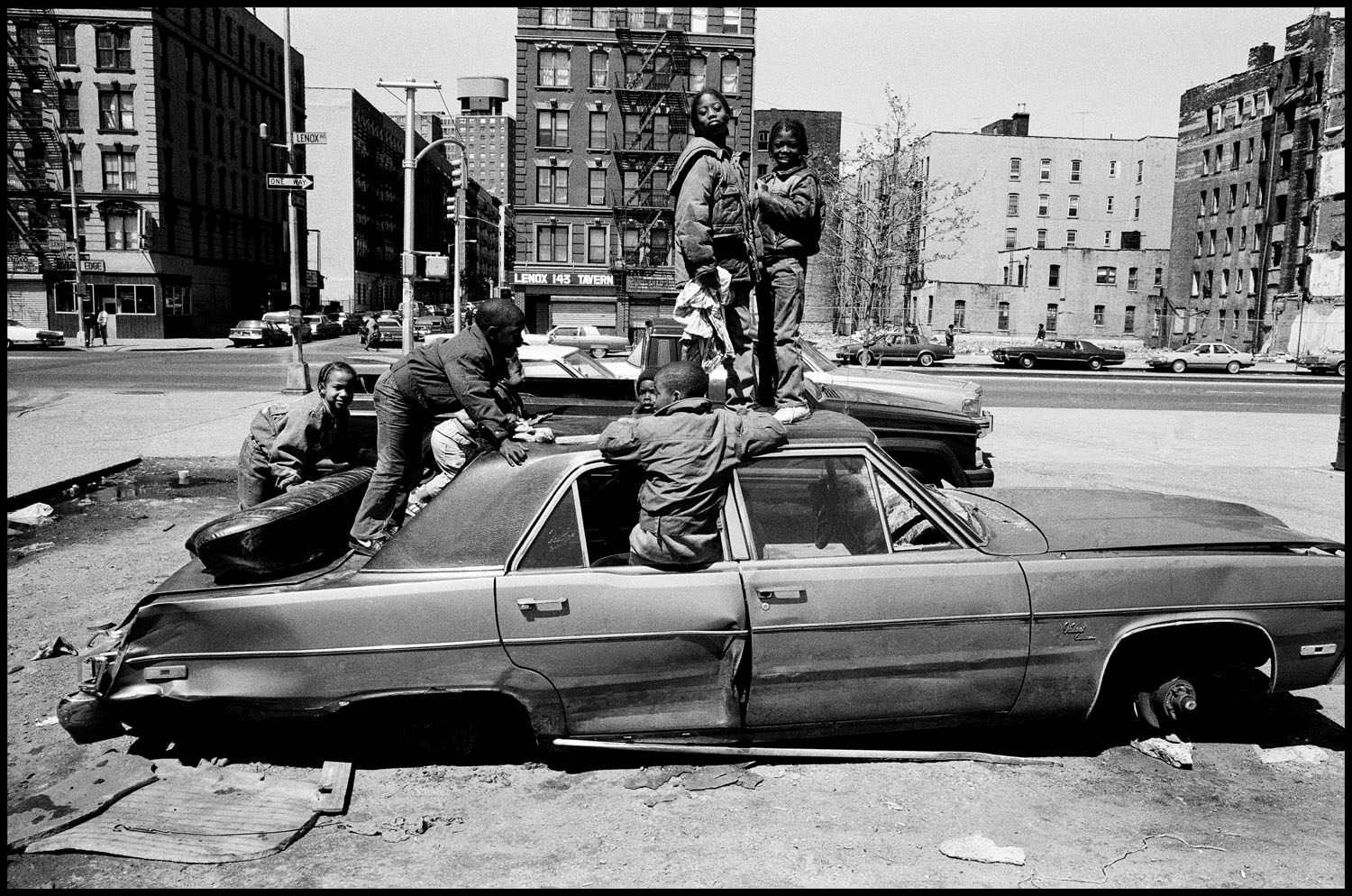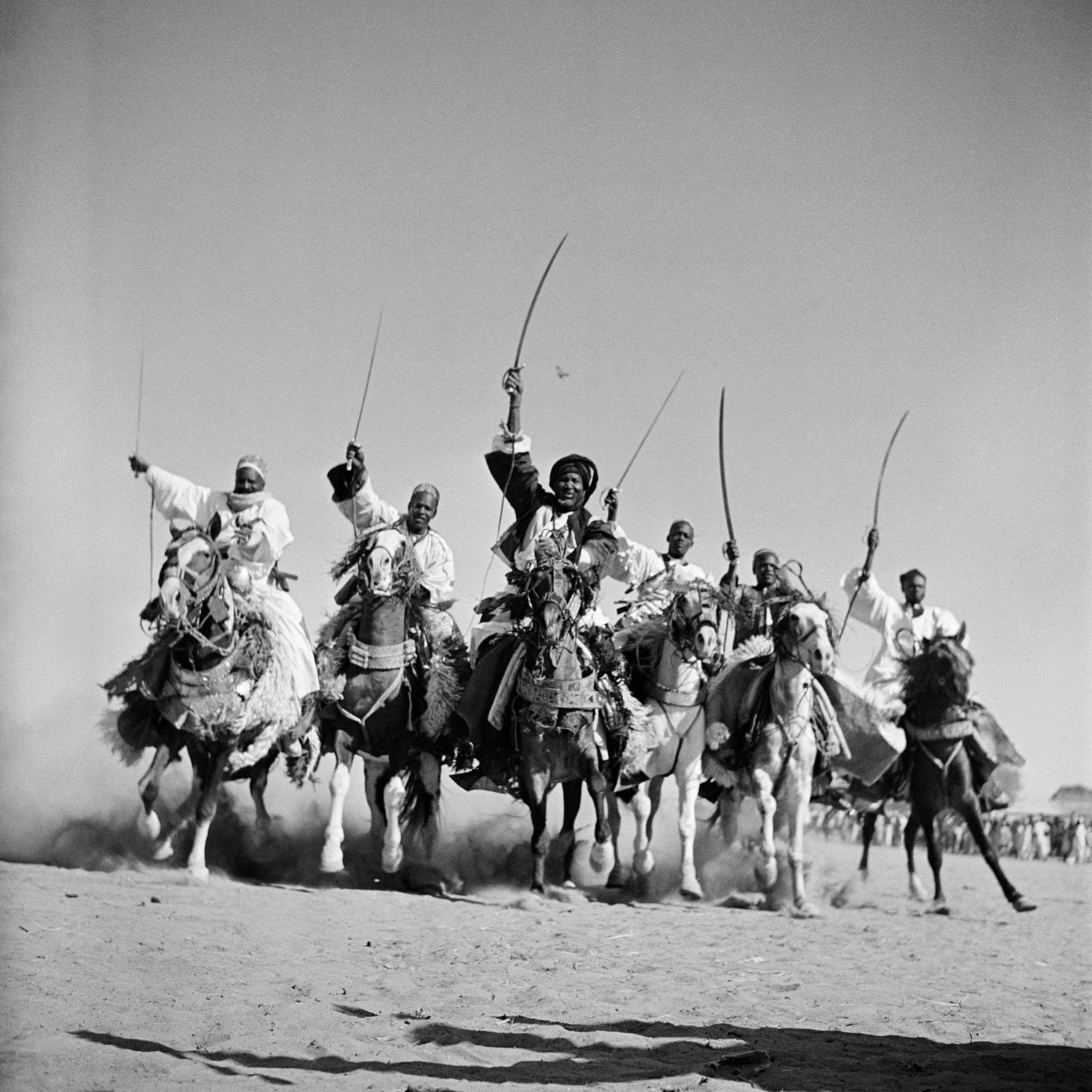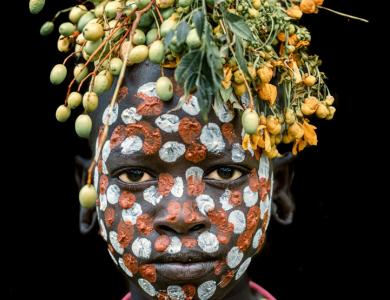"As a photojournalist I am interested in searching for the positive commonalities in human spirit, to expose those intimate moments among people that reminds us of dignity and hope in the face of conflict."
Spanish-American photographer Moises Saman is considered one of the leading conflict photographers of his generation for his documentation of Iraq, Egypt and the Arab Spring.
This intriguing image shows a TV playing an Indian soap opera inside the tent of a family displaced because of their affiliation with ISIS. Photographed in Iraq, Qayarah, 2018.
Purchase print
"I’m very open to any visual conceits and any possibilities at my disposal to better explain to people the ideas I’m exploring."
The late Tim Hetherington was an innovator in documentary photography and filmmaking. Hetherington was killed in 2011, aged 40, while covering the escalating violence in Misrata, Libya.
This image shows a young boy holding a homemade football. Taken in Kuito, Angola, 2002, as the country's 27-year civil war came to an end.
Purchase print
"When I say that people can be fired or arrested or abused or whipped or banished for trifles, I am not describing the exceptional case for the sake of being inflammatory."
Ernest Cole's early work chronicled the horrors of apartheid and in 1966 he fled the Republic of South Africa becoming a ‘banned person’. He moved to New York chronicling the racial inequity he witnessed and died in the city in 1990. During his life he was known for only one book: House of Bondage – published in 1967.
This photograph shows a street scene outside Harlem's subway station, New York, 1972.
Purchase print
"I love beautiful things, and I want to make pictures that lift people's spirits. I see the giving and receiving of photographs as something beautiful and personal."
During the 1960s to the 80s, Japanese photographer Hiroji Kubota has documented Saigon (now Ho Chi Minh City), North Korea and China. He also reported on the 1968 American presidential election.
This surreal scene is of the Kim Chaek Ironworks, the largest ironworks in North Korea, in 1986. A huge billboard showing the late president, Kim Il Sung, peering into a furnace is found in front of the main gate to the ironworks.
Purchase print
"The main thing for me is that I'm happy that I've been able to work as a professional photographer. What is at the core of my work is, in essence, a meditation on being a human being."
Eli Reed's work from El Salvador, Guatemala and other Central American countries and his photographs depicting the effects of poverty on America’s children for a film documentary called Poorest in the Land of Plenty has garnered much attention since the 1970s.
Here we see a street scene in New York's Harlem, 1987, where children are playing in an abandoned car.
Purchase print
"You must feel an affinity for what you are photographing. You must be part of it, and yet remain sufficiently detached to see it objectively. Like watching from the audience a play you already know by heart."
Founder member of Magnum Photos George Rodger was predominantly a war correspondent, documenting conflicts in Eritrea, Abyssinia and the Western Desert. He also traveled to Iran, Burma, North Africa, Sicily and Italy.
Hassau chieftains demonstrate their superb horsemanship in a "Fantasia" in Chad, 1941.
Purchase print
The World Photography Organisation has partnered with Magnum Photos to celebrate their annual Square Print Sales. Open for just five days, you can purchase signed or estate-stamped, museum-quality 6x6 inch prints for $100 (USD) from now until midnight (EST) Friday, June 14, 2019. Click here enjoy the full selection and to purchase your favorite prints.



